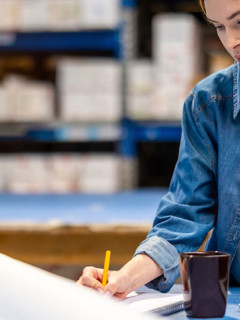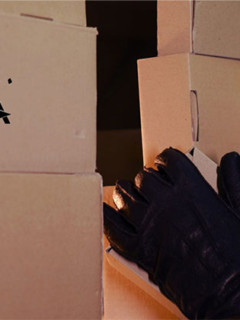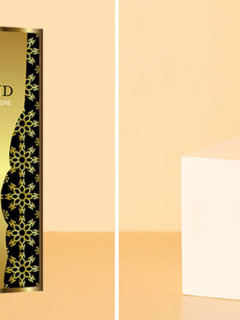The topics of packaging and sustainability are no longer conceivable without each other. Plastic, Styrofoam & Co. cause mountains of waste weighing tons all over the world. Where can packaging be dispensed with? Where can packaging be reduced? But also: how durable does packaging have to be? The focus is increasingly on innovative (natural) materials that can serve as packaging. For example: mushrooms!
The rethinking of packaging materials is not a “from today to tomorrow” process. There are ideas, tests, setbacks. Many of the actually good approaches fail because they are not suitable for mass production. On the other hand: it was not conceivable 10 years ago – and has not yet been completely “thought through to the end”. But: E-mobility is now on everyone’s lips, and also in more and more garages. Perhaps one of the new approaches to packaging will also catch on?
Packaging creates enormous mountains of waste
If you go shopping in the supermarket, you will find almost all food and products packaged in some way. For households, that ends up meaning lots of packaging waste. And companies and industrial enterprises also produce tonnes of packaging. At some point, the question arises: is all this necessary at all?
On the one hand, packaging serves as a presentation surface to transport brands or products. On the other hand, they also have a protective function, for example to protect them during transport, from bad weather or strong temperature fluctuations. So this is where packaging is needed.
However, the topic of packaging is always linked to environmental issues. According to the Federal Environment Agency, almost 19 million tonnes of packaging waste were generated in Germany alone in 2018. Paper waste and plastic in particular are the main culprits for these waste volumes. This is one reason why more and more companies are looking at sustainable packaging materials, which mean less waste and more environmental protection.
What is sustainable packaging?
When packaging is sustainable is not clearly defined. What is clear, however, is that it must be resource-saving. This applies to both the use of materials and the use of energy. For consumers, packaging is sustainable above all if it is biodegradable and consists of recycled or recyclable materials.
Paper/cardboard and glass in particular are considered sustainable. But there are other alternatives that can serve as sustainable packaging.
Various options for the packaging industry
The industry is already taking various paths to make packaging sustainable(er). There are different materials that the sustainable packaging can be made of.
Bio-based packaging
Biobased packaging is made from biomass, i.e. organic substances. In the case of bioplastics, for example, the biomass comes from renewable raw materials such as maize or sugar cane.
Packaging made from biodegradable plastics
Biodegradable packaging can be decomposed by naturally occurring components. These are in particular carbon dioxide and water. The term should not be confused with “degradable”. This only means the decomposition of larger plastic parts into microplastic, which is just as harmful to the environment as large plastic parts. Biodegradable packaging, on the other hand, decomposes without leaving harmful residues.
Compostable packaging
Compostable packaging also biodegrades. It is therefore the same process as with biodegradable plastics – but under optimised conditions. However, you should not dispose of compostable bioplastics in your compost in your home garden. They are only designed for industrial composting.
3 Innovations in the field of packaging
New packaging should also be sustainable, sensible and functional and thus declare war on plastic, plastic & co. Companies in the packaging industry are therefore looking at innovative materials and manufacturing processes to bring sustainable packaging to the market. Today we would like to present 3 exciting alternatives to conventional packaging.

Cushioning material: Mushrooms instead of Styrofoam
tyropor is one of the most widely used packaging materials. From an environmental point of view, however, the material is anything but sustainable. Styrofoam is not biodegradable and it takes about 1.5 litres of petrol to produce a single cube of Styrofoam. The American company Ecovative has therefore developed a natural alternative to Styrofoam. It uses biological waste and mushrooms to produce innovative packaging – in any shape.
In the first step, the organic waste is shredded and mixed with special fungal cultures (mycelium). These are then given five days to grow. The biowaste serves as food for the fungi. Afterwards, the mixture is shredded again and then shaped into its final form. To prevent it from growing further, the mass is heated. This also makes the new mycelium packaging germ-free.
The sustainable Styrofoam substitute is ideal for shipping by post, for example glass bottles or other fragile items. But it is also an option for the automotive industry and the construction industry to replace Styrofoam there.
Bio-technologists have been researching, working and testing on this topic for many years. According to the science journal Quarks (WRD), thanks to mushroom biotechnology, mushrooms can help solve very essential and existential problems such as food shortages, fuel production or growing mountains of waste. Many products are already on the market, but mass production is still a long way off. Why?
In principle, the biggest open question at Pilz-Biotech is: How do I produce on a large scale at low cost?
(Biotechnologist Vera Meyer, source: quarks.de)
Essentially, “processes and production chains have to be created and optimised, especially in the area of quality assurance”. There is still a lack of investors, quarks.de continues. But also: In recent years, the topic has been gaining momentum. A steady stream of new patents based on mushroom technology has been filed in recent years. Experts agree that optimism is the order of the day: In the next ten years, the leap into the mass market should be made.
Labels: Sugar cane as an alternative to petroleum
Labels are found on almost all products. However, even these are not very sustainable, as they are made of polyethylene, which is produced from petroleum. Avery Dennison has therefore developed an environmentally friendly alternative in the form of a bio-based PE film. This is made from sugar cane ethanol and has the same physical and mechanical properties as conventional film.
The white and transparent version is used to label products in the food, beverage, household and cosmetics sectors. Processing and recycling are the same as for conventional PE film. For consumers, the sustainable variant therefore means no change.
Tetra Pak also already uses sugar cane for the production of bio-based packaging. The cartons for chilled dairy products, for example, are made exclusively from sugarcane-based plastic and cardboard. With the new version of the Tetra Brik Aseptic package, Tetra Pak also recently introduced a package with a bio-based closure. Not only the coating of the packaging, but also the closure cap is made from sugarcane plastic.

Packaging: Grass paper instead of plastic
Not only trees can be made into paper, but also grass. The fast-growing raw material has several advantages: In contrast to forests, grass can grow close to the paper mill and thus has only a short transport route. It also grows much faster and can be harvested several times a year. In addition, processing it into fibres requires less water and energy. Grass paper can therefore score points not only in terms of eco-balance, but also in terms of economic efficiency. In production, the grass fibres are then mixed with classic wood fibres and processed into cardboard boxes, cartons or wrapping paper.
Advantages over classic packaging
Sustainable packaging convinces above all with its eco-balance. Unlike polystyrene or plastic, they are made of renewable raw materials and are recyclable. Unlike the “environmental sinners” of packaging materials, they also consume less energy during production. This also makes them economically attractive for manufacturing companies. And also in terms of their protective function, sustainable packaging is usually in no way inferior to conventional solutions.
“New” packaging still more the exception than the rule
Not least as a reaction to changing demand behaviour, a lot is happening in the retail sector in particular with regard to packaging reduction and packaging avoidance. In the case of disposable packaging, the changeover from materials with a long retention time to recyclable materials or to those with a high recycling content can also be observed. The packaging industry and companies are being asked to develop and also use environmentally friendly alternatives. But even though sustainable packaging already exists on the market in the form of cardboard boxes made from grass paper, cushioning material made from mushrooms, so-called bio-film (made from potato starch) or bubble cushions made from paper: These materials are still used far too rarely.














